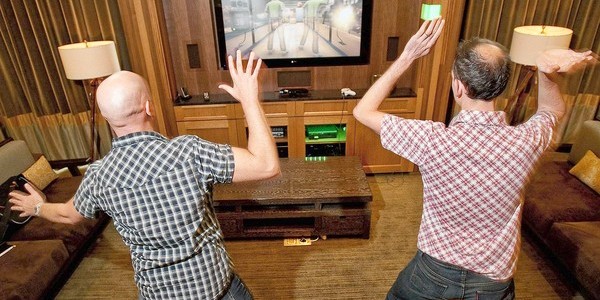The original NES controller had five buttons: A, B, Start, Select and the D-Pad. The SNES had nine with the addition of Y, X and two shoulder buttons. From then on, controllers became increasingly more complicated, manufacturers cramming in as many buttons as they could until buttons literally came on top of buttons (L3 and R3). Then something changed. Nintendo released the Wiimote. It was held like a television remote and, without its nunchuck attachment, only had seven buttons to use for games. Motion controls were born.
And as a new breed of minimalistic games began to take over, others remained that warranted the “old-school” style of play, meaning they used the “classic” controller or a GameCube controller. The physics of those games were too complicated; the Wiimote would not abide. Despite this, Nintendo kept aiming toward the casual. Even Microsoft and Sony joined the party by sacrificing their hardcore reps with a more simplfied library of motion-controlled games.
Now it seems those sacrifices are being recouped as all three companies have shelled out new motion control hardware and software that definitely isn’t for the casual crowd. With Nintendo, we have a Wii console that looks to shed the pearly drape of innocence its worn these last five years and replace it with a tough, HD shell. Sony revealed the PS Vita and hopes to meld the graphical allure of its hardcore titles with the bland touch-and-go mechanics of iPhone games. And Microsoft, who peddled motion controls harder than anyone else at E3, was probably at its strongest when showcasing the new Kinect features for its top-tier games, such as voice control in Mass Effect 3 and motion control in Ghost Recon: Future Soldier.
And yet, I feel like all three of them have missed the point: motion controls don’t work with more mature video games. They belong in the simple, party games. They belong in the dance games and the shovelware because that audience is willing to stand in front a television and look goofy.

It’s an argument of comfort. While most casual motion control games are indeed entertaining, the mini-game nature of those titles gives levity to the experience. They’re easy to pick up, play, and put down a few minutes later. More hardcore titles that require hours of gameplay and attention are difficult to get through if you’re standing and moving the entire time. Seriously, how many fans of Ghost Recon: Future Soldier will voluntarily play hunched in front of the 40 inch flat screen for hours on end like this?
These games are targeted toward an older audience because they are more challenging to play. So when, for example, Sony takes the Uncharted franchise and dilutes it to “just touch where you want Drake to jump,” players lose a big part of the experience. I like the trial and error that comes with these games. I like having to master what buttons to press and when because it gives urgency. Tapping the screen and watching your protagonist leap ledge to ledge can hardly be called a challenge. It’s skill over “the experience.”
You could argue that some first-person shooters, such as Metroid Prime 3 and Killzone 3, prove that motion controls can work with these types of games. I disagree. Aside from Metroid, which was a more secluded experience, most motion-controlled first-person shooters lack the precision and tightness that is offered with joystick and D-pads, especially if you’re playiing online. Even Kevin Levine reassured that gamers don’t have to use the motion control implantation offered in BioShock Infinite, because while there may be optimism for the technology (and money behind it), gamers understand its place.
“Any experience that sits in the realm of motion play needs to be kept separate from the main experience,” Levine said. “It needs to be firewalled off so that if this experiment isn’t for you, or doesn’t turn out to be all that great, you can just ignore it.”
Levine added that developers are currently in an “experimental stage” in regards to motion controls. With that in mind, it’s important that gamers can “firewall” or deactivate these new options. That the creator of one of the most successful mature games in the industry is saying motion controls aren’t for everyone only deepens my opinion.
This technology, while growing, is simply not ready for these types of games. It may alter, but it doesn’t necessarily enhance. Maybe in a decade or so it will. Maybe by then we’ll have new technology that will be to motion controls what the DualShock was to original PlayStation controller. Until motion controls are the equivalent to Sony’s faux PlayStation 9 ad, they should keep their distance from the mature audience.


















